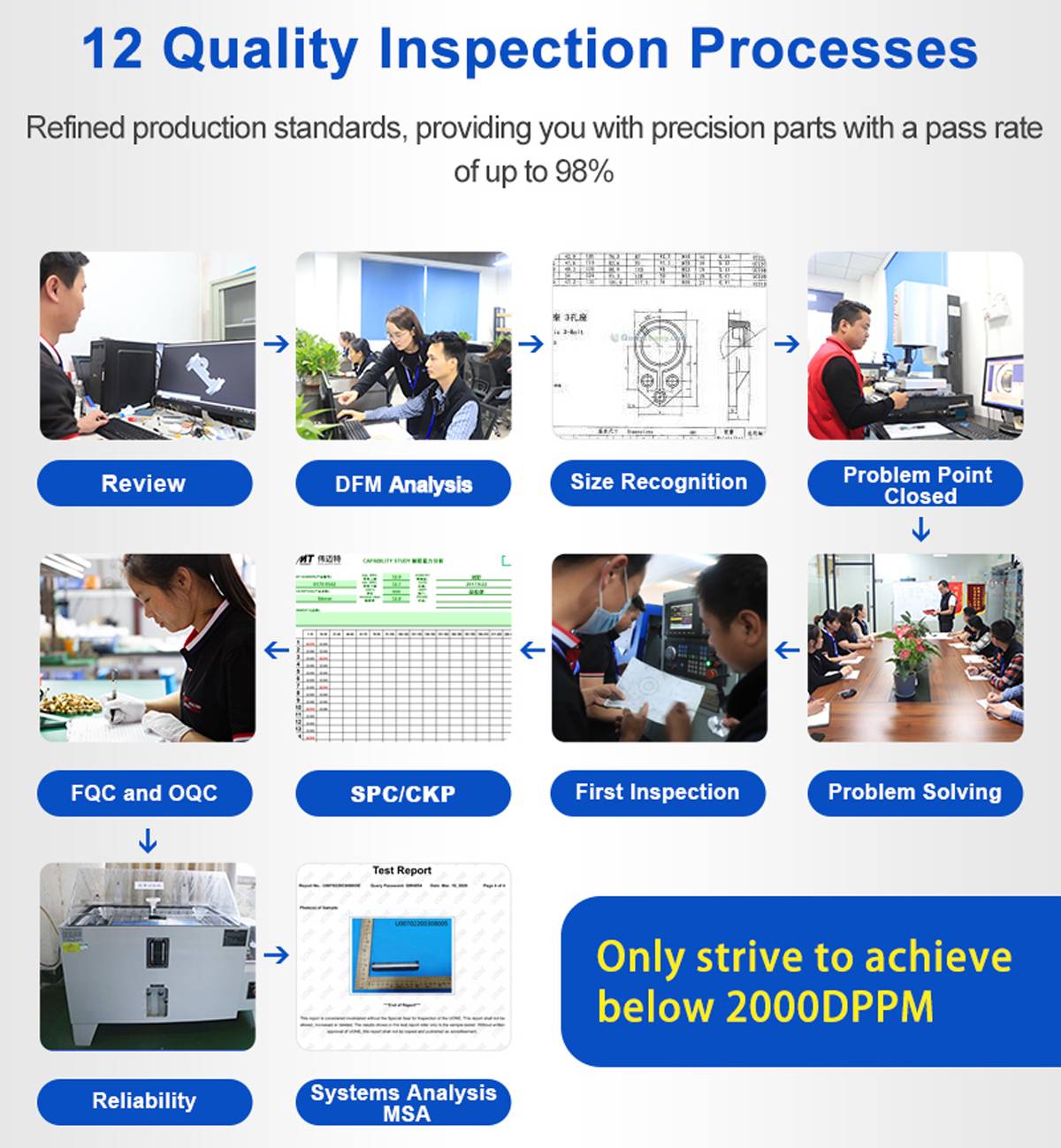
 4 |
Published by VMT at Apr 12 2024
4 |
Published by VMT at Apr 12 2024
In the realm of precision CNC machining part manufacturing, blade marks have long been a critical factor affecting product quality and production efficiency. However, even with tooling changes, program modifications, and the adoption of brand-new CNC machines, the issue of blade marks can sometimes persist. This article delves into the underlying reasons behind this phenomenon, providing tailored solutions for CNC machining factories.

1. Improper Tool Selection and Usage
As the core tools in CNC machining, improper tool selection and usage can directly impact machining quality and efficiency. Failure to address blade marks despite tooling changes may stem from several reasons:
Mismatched tool materials: Different materials require specific tool materials for machining. Incompatibility between the tool material and the workpiece material can lead to excessive or insufficient cutting forces, resulting in blade marks.
Improper tool geometry parameter settings: Parameters such as rake angle, relief angle, and cutting edge angle significantly affect the cutting process. Improper parameter settings can lead to uneven distribution of cutting forces, thus causing blade marks.
Rapid tool wear: Tools gradually wear out during machining. Excessive wear can lead to unstable cutting forces, thereby producing blade marks. Moreover, the quality of tool sharpening also affects tool life and machining quality.
2. Inadequate CNC Program Writing and Optimization
CNC programs are crucial for guiding CNC machines during machining processes. Inadequate program writing and optimization are also significant contributors to blade mark issues:
Unreasonable cutting parameter settings: Parameters such as cutting speed, feed rate, and cutting depth directly influence the cutting process. Improper parameter settings can result in fluctuating cutting forces, leading to blade marks.
Improper toolpath planning: Toolpath planning should minimize abrupt tool movements to reduce sudden changes in cutting forces. Inappropriate toolpath planning can lead to unstable cutting forces, thereby causing blade marks.
Inadequate post-processing strategies: Post-processing strategies, including compensation and filtering, are essential for improving machining quality. Inadequate post-processing strategies can result in surface irregularities, leading to blade marks.
3. CNC Machine Performance and Setup Issues
Despite employing new CNC machines, inadequate machine performance or setup can still contribute to blade mark problems:
Insufficient machine accuracy: Machine accuracy directly affects machining quality. Insufficient machine accuracy can lead to error accumulation during machining, resulting in blade marks.
Poor machine stability: Machine stability is crucial for ensuring machining quality. Vibrations or drifts during machining can lead to unstable cutting forces, thereby causing blade marks.
Improper machine setup: CNC machine setup includes parameter settings and mechanical adjustments. Improper setup can hinder machine performance, affecting machining quality.
4. Other Factors
In addition to the above factors, several other factors may contribute to blade mark issues:
Workpiece material issues: Material properties such as hardness and toughness can affect the cutting process. Unstable material properties or defects can lead to fluctuating cutting forces, resulting in blade marks.
Environmental factors: Environmental conditions such as temperature and humidity can affect machine and tool performance. Poor environmental conditions can lead to unstable cutting forces, resulting in blade marks.
Operator skill level: Operator skills are crucial for ensuring machining quality. Inadequate operator skills or improper operation can lead to issues such as improper cutting parameter settings or tool misuse, resulting in blade marks.
5. Solutions and Recommendations
Addressing blade mark issues requires comprehensive solutions and recommendations:
Proper tool selection and usage: Select appropriate tool materials and geometry parameters based on workpiece materials and machining requirements. Ensure proper tool sharpening and maintenance to maintain tool sharpness and longevity.
Optimize CNC programs: Set cutting parameters and toolpaths according to machining requirements and machine capabilities. Improve post-processing strategies to enhance surface finish.
Improve CNC machine performance and setup: Choose high-precision and stable CNC machines and perform proper setup and maintenance. Ensure machines operate with stability and precision during machining.
Enhance workpiece material quality control: Implement strict quality control measures for workpiece materials to ensure consistent material properties. Select suitable cutting processes and tools for specific materials.

Improve environmental conditions: Optimize machining environment conditions to maintain suitable temperature and humidity levels. Minimize environmental factors' impact on machine and tool performance.
Enhance operator skill levels: Provide comprehensive training and education for operators to improve their skills and operational proficiency. Ensure operators are proficient in CNC machining technology and equipment operation.
In conclusion, addressing blade mark issues requires a multifaceted approach, including proper tool selection and usage, CNC program optimization, CNC machine performance and setup improvements, and considerations of other contributing factors. Only by comprehensively addressing these factors and implementing targeted measures can blade mark issues be effectively resolved, thereby enhancing the quality and efficiency of precision CNC machining parts.
